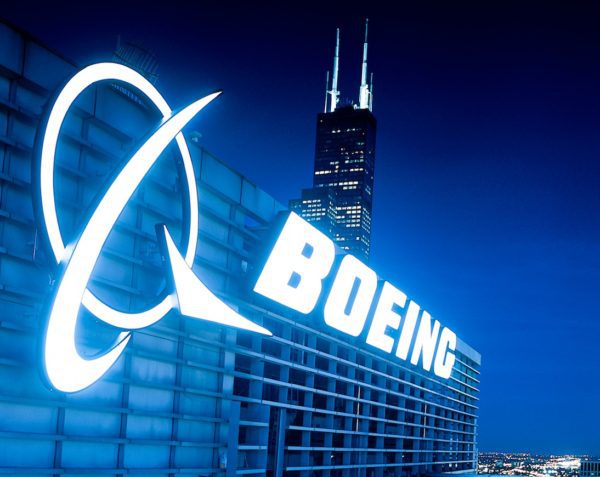
boeing buildingjpg e1560881048343
As expected, Boeing announced an impressive net and operating loss for its first six months of 2019, with the worst results suffered in Q2 because of the MAX grounding and reduced production output
HY1 net earnings show a $793 million loss, compared to $4.613 billion profit in 2018. Revenues dropped 19 percent to $38.668 billion.
By quarter, Q2 earnings went deep into the red at $-2.9142 billion compared to a $2.196 billion profit the previous year. Revenues for the quarter were 35 percent lower at $15.751 billion. Losses from operations dropped to $-3.380 billion, free cash flow in Q2 was $-1.1011 billion compared to $4.304 last year.
Where Boeing Defense, Space and Security, and Global Service contributed positively, Boeing Commercial’s results were marred by the effects of the MAX and 737 issues. HY1-deliveries of the type dropped from 269 to 113, or from 137 to 24 in Q2. As reported last week, Boeing has taken a $4.9 billion charge on the MAX as well as expecting $1.7 billion extra costs as the production of the 737NG/MAX has been reduced to 42/month.
Commercial Airplanes deliveries in Q2 were 54 percent lower from 194 to 90 and in HY1 from 378 to 239. The 767 saw the biggest increase from 9 to 22 in HY1, or from 5 to 10 in Q2. In HY1 22 777s left Everett or 3 less than the previous half year-period, while Q2 output was almost on par at 12 (13). The rate increase on the 787-line is visible with 78 deliveries in HY1 compared to 72 last year and 42 in Q2 compared to 38. For the 747 these numbers are 4 versus 3 for HY1 and 2 versus 1 for Q2.
Revenues at Commercial Airplanes dropped by 66 percent in Q2 to $4.722 billion or by 38 percent in HY1 to $16.544 billion. Net earnings are $-4.946 billion in Q2, compared to $1.785 billion last year and $-3773 billion in HY1 versus $3.197 billion.
777X schedule at risk
Boeing is giving warning shots about the 777X first delivery. While saying that the program is progressing well to aims for a late 2020 delivery, at the same time it says ‘there is a significant risk to this schedule given engine challenges, which are delaying first flight until early 2020’. The issues concern the General Electric GE9X that has needed a parts re-design that is expected to be certified only this Autumn.
Boeing is unwilling (and unable) to give guidance for the full year as if might suffer additional costs related to the MAX. During the analysts and media earnings call CEO Dennis Muilenberg said that a further 737 rate reduction or even temporary line-shutdown isn’t to be ruled out if the MAX returns to service later than Q4. In the current timeline Boeing expects the MAX to complete all necessary tests in September, leading to an early Q4 return to service. However, this is dependent on the FAA and other regulatory agencies that decide the timeline. If the MAX will fly again this year, Muilenburg sees no obstacles for ramping up production within a year from now to 57, the original target for mid-2019. This timeline will also determine when the New Mid-market Aircraft will be launched as the MAX is top priority. Boeing also needs to further fine tune the NMA business case on manufacturing and production techniques.
Views: 0



